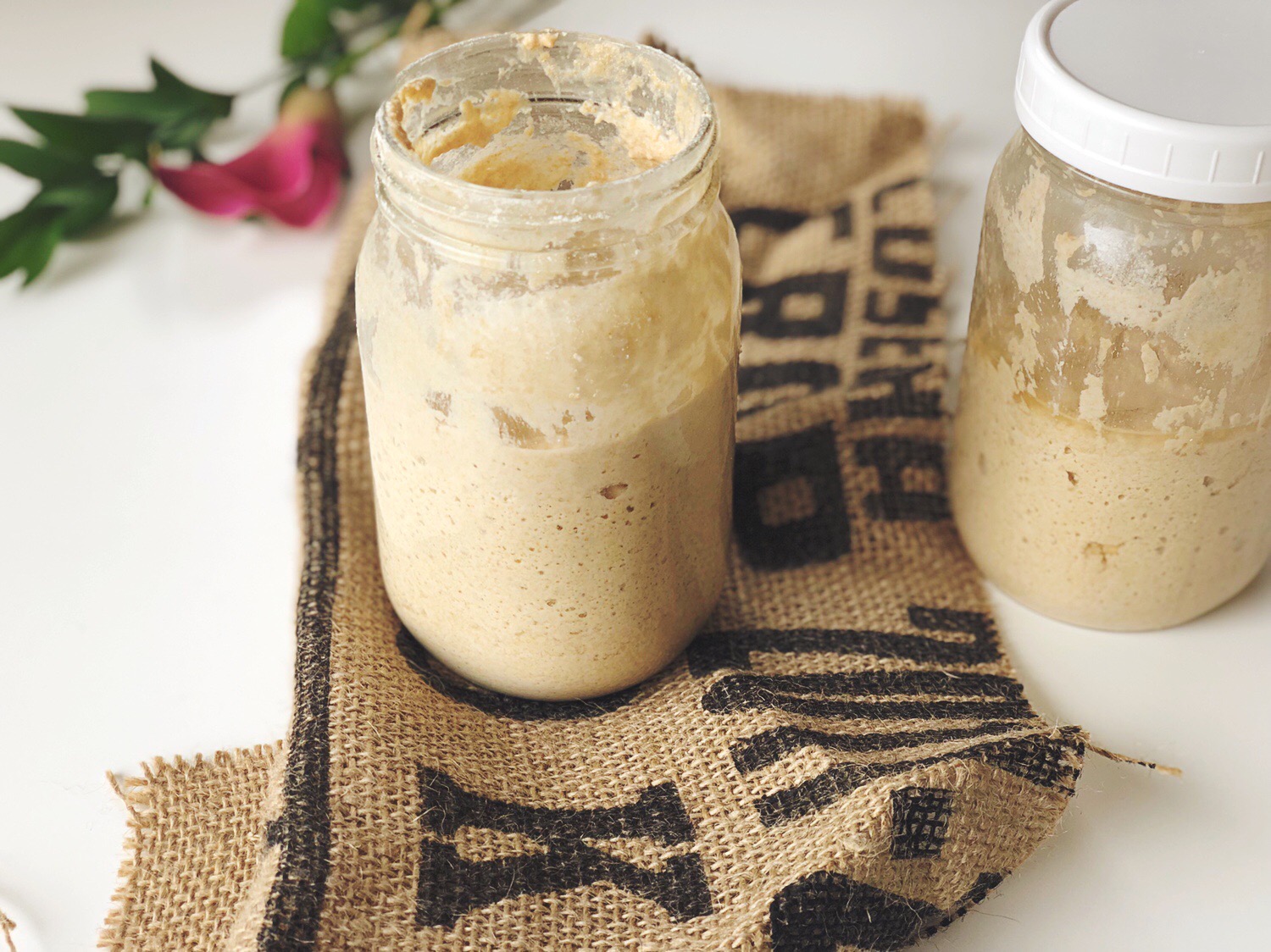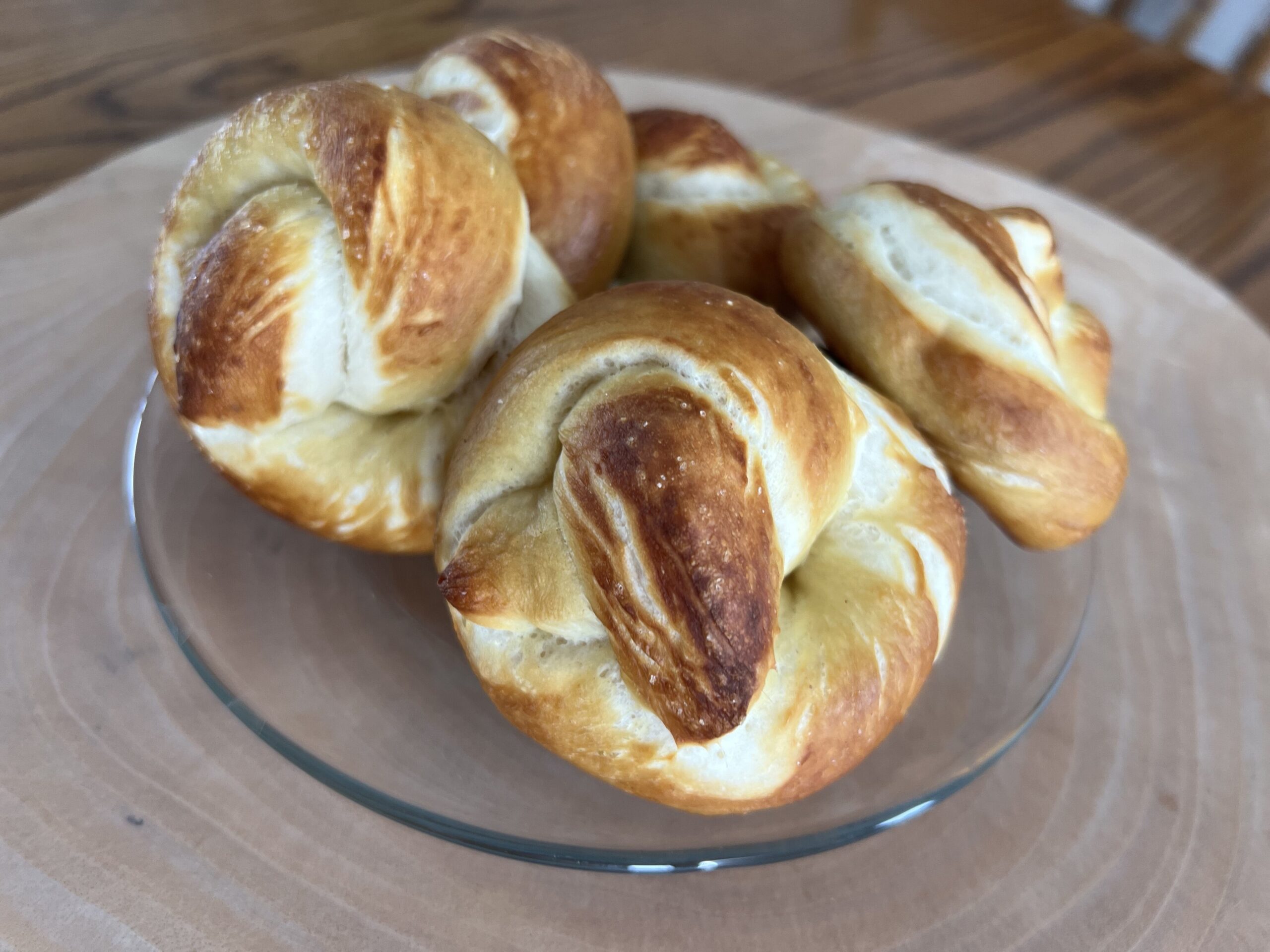Sourdough Starter FAQs
For the Beginner and Beyond
Making your own sourdough starter can be very intimidating at first. It feels like a balance between a weird science experiment and real food. The first week or so is the most important and can be the most frustrating. Let’s answer your most commonly asked questions to try and navigate this more smoothly. I promise, it’s worth sticking to! The health benefits alone are worth the time it takes to learn!
Why isn’t my starter very bubbly?
If you’re making a new starter and it’s not bubbling up as quickly as you would like – put it somewhere nice and WARM – inside the oven with the light on, or even wrapping it in a towel (especially if it’s sitting on a granite countertop), on top of the fridge, or other warm spot in the house. You can also feed your starter twice a day and see if that gives it a nice boost.
What if I don’t see any hooch?
That means you’re taking excellent care of your starter – the hooch accumulates as the starter ferments and starts to get “hungry” so you aren’t doing anything wrong if you never see it show up!
Can I change the type of flour I feed it?
Yes, you can. I recommend doing it slowly, over several feeds. Start by adding in about a tablespoon of the new flour into your next feed, and increase it each time until it’s fully converted.
How long does it take to make a mature starter?
This will depend on many factors including the strain of yeast you capture, the frequency of feedings, type of flour, temperature in your home, etc. But there is no definitive answer. It can take a few weeks to get some starters active and happy enough to make bread. But once it’s bubbling and smells good after the first week or so – you can use it in other recipes that don’t require the dough to rise.
When can I use it?
After the first week of daily feeds, if your starter is bubbling up and also smelling good – this can be a fruity, yeasty, bread, or sourish smell – then you can use it in the recipes mentioned above. To start making bread, wait until your starter is bubbling really well and also EXPANDING – rising up in the jar after its fed. If the starter isn’t rising, it won’t rise bread and you’ll end up frustrated, so be patient and wait until it shows you it’s ready.
How come I have to discard the first week? Can I use the discard?
You are growing the starter from scratch – teaching it how to build the right ratio of wild yeast and good bacteria. If you use the discard during that first week you are using a science experiment. Wait at least a week, and get rid of each feeding so that you don’t overwhelm your starter by keeping it too large as it’s trying to learn and grow. This is important, it will really help the outcome if you get rid of some each time and keep it smaller.
Did I kill it?
No, you didn’t. I can almost guarantee it. Unless your jar is completely overrun with mold – it’s not dead. I have revived starters that haven’t been touched in months from the back of my fridge. The starter is alive, it goes through phases and cycles with the changing of the seasons! If it seems off to you, then give it a nice big feed and feed it twice a day for a few days keeping it somewhere warm and see if it perks up!
There is mold in my jar! Help – what do I do?
If it’s during your first week or so of making a new starter – mold is SUPER common. It’s still learning, and the daily feeds teach it to develop that right balance of the good bacteria that will fight off the bad guys. If you see mold in your jar or on the top of your starter during this time – scrape it off, then take a new spoon and scoop out a little of the untouched starter and transfer it to a new jar to feed it there. If you see mold months after you’ve got a starter going, it means the starter no longer has the ability to fight off the bad bacteria or something foreign has gotten into the jar. At this point . . . you should start again.
Can I use almond/coconut flour to make my starter?
No. These flours have a completely different chemical makeup and will not make a sourdough starter like grain flours will. If you’re already using a grain free flour, you aren’t concerned with breaking down the gluten, predigesting the starches, etc like you would with grains so it’s kind of pointless anyway. If you find recipes or things out there for this my guess is they are just adding vinegar or something to the dough to give it a tang.
What is “active” starter?
Your starter goes through its own “life cycle” – when you feed it, it starts to ferment and expand, producing CO2 and creating nice bubbles as it rises up. Once it hits the peak, it will slowly start to deflate over time, and then flatten completely and start accumulating hooch, indicating it’s hungry. Your starter is active and best for bread when it’s at the peak and for several hours afterward. Each starter will have it’s own unique timeline but most hit the peak within 3-12 hours after feeding, depending on the starter and temperature. When making bread – the recipe needs “active” starter to rise the dough!
How do I store my starter in the fridge?
I keep my starter in the fridge because it slows the fermentation, meaning I don’t have to feed/use it daily. It makes it less maintenance and also keeps my starter mild in flavor. If left on the counter, you will need to feed your starter daily, meaning you’re either baking every day, or you’re throwing a lot of starter out. When it’s stored in the fridge you have more leeway. I don’t recommend placing your starter in the fridge until it’s mature and happy. There are two ways to use it from the fridge: 1. you can take it out, use it, then feed it and get it nice and happy again then put it back in the fridge so it’s ready to go for next time. 2. you can take it out, feed it and get it happy (a few hours at least depending on your starter), then put it back in the fridge again and repeat the next time you want to bake. There is no right or wrong here, it’s more habitual and what works for you. I love to have mine ready to go, so I always feed it after I use it and know it’s happy when I need it!
What is a power feed?
If your starter isn’t super happy or it’s been sitting in the fridge for a while without being fed, you can do a power feed to help wake it up more quickly. Take it out of the fridge, pour off any liquid and scrape off enough starter that you only have 1/4 c remaining. Feed it 1/4 c water and flour. The next day feed it 1/2 c water and flour. Watch for bubbles. Keeping it on the counter during this power feed will speed it up more quickly. Continue to feed it daily until it’s nice and happy again.
Do you save the discard? Do I have to feed it?
I don’t ever save my discard. Many people do collect it, but I never have. I just use it up or I dump it down the drain. If you’re saving it, it will get more sour over time the longer it sits. If you feed it you’ve just created an extra big starter, so I would use it up!






Comments +